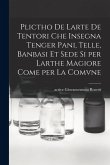Notes Pour Servir a L'Ãtude De La Soie, written by Paul Francezon and published in 1880, offers a detailed exploration of silk production and the silk industry. This historical work provides insights into the techniques, challenges, and economic importance of silk manufacturing during the 19th century in France. Francezon's study serves as a valuable resource for understanding the historical context of textile production and the cultural significance of silk. This book is essential for historians, textile enthusiasts, and anyone interested in the evolution of industrial processes. It captures a moment in time when silk was a highly prized commodity, shaping trade, fashion, and economic landscapes. Discover the intricacies of silk production through Francezon's meticulous notes and gain a deeper appreciation for this luxurious fabric. This work has been selected by scholars as being culturally important, and is part of the knowledge base of civilization as we know it. This work was reproduced from the original artifact, and remains as true to the original work as possible. Therefore, you will see the original copyright references, library stamps (as most of these works have been housed in our most important libraries around the world), and other notations in the work. This work is in the public domain in the United States of America, and possibly other nations. Within the United States, you may freely copy and distribute this work, as no entity (individual or corporate) has a copyright on the body of the work. As a reproduction of a historical artifact, this work may contain missing or blurred pages, poor pictures, errant marks, etc. Scholars believe, and we concur, that this work is important enough to be preserved, reproduced, and made generally available to the public. We appreciate your support of the preservation process, and thank you for being an important part of keeping this knowledge alive and relevant.
Bitte wählen Sie Ihr Anliegen aus.
Rechnungen
Retourenschein anfordern
Bestellstatus
Storno








